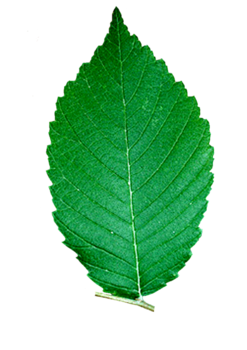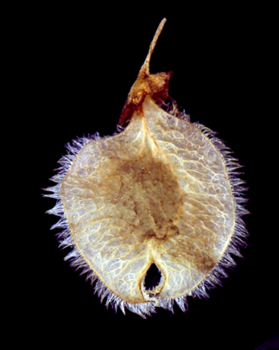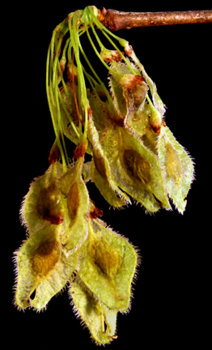American Elm
Classification:
Family: Ulmaceae, elm family
Genus, species: Ulmus americana
Leaves:
Leaf edges are coarsely double-toothed. Base of leaf is asymmetrical. Upper surface of leaf is smooth or slightly rough. Lower surface of leaf is usually hairy. Leaves look similar to leaves of Slippery Elm but texture is not as rough.
Bark:
Bark is gray, furrowed, divides into interlacing fibrous ridges.
Fruit:
Fruit is produced in spring when leaves emerge. Fruit is about 1/2 inch long. Seed is surrounded by thin papery wing, notched at apex, hairy at margin.
More Information:
The genus name Ulmus is from the Latin for "elm."
Dutch elm disease: Elm trees are susceptible to infection by Dutch elm disease. The disease is caused by an ascomycete fungus and is spread by a beetle. The beetles carry the fungus from infected trees to healthy trees when they feed on twigs and upper branches. The beetles lay eggs in the bark. The beetle larvae hatch and form tunnels through the vascular tissue of the tree. The fungus then spreads through the tunnels. The trees respond to infection by plugging their own vascular tissue. This prevents the tree from transporting water and nutrients from the roots to the rest of the tree, eventually killing the tree. Infection gradually causes death of leaves, branches, and roots. The name “Dutch elm disease” refers to its identification in the 1920s in the Netherlands. The disease was first reported in the United States in 1928 and has spread throughout most of eastern North America.
Photos:American Elm leaf

American Elm fruit

American Elm fruit
